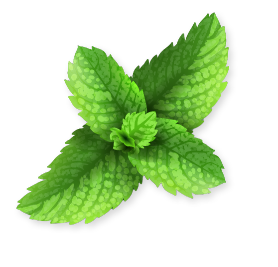Ayurvedic Treatment for Central Retinal Artery Occlusion (CRAO) and Central Retinal Vein Occlusion (CRVO) in Kerala

Understanding Central Retinal Artery Occlusion (CRAO)
Central Retinal Artery Occlusion (CRAO) is a serious eye condition that occurs when the central retinal artery, which supplies blood to the retina, becomes blocked. This blockage leads to a sudden and severe loss of vision in the affected eye. CRAO is often caused by emboli (blood clots or cholesterol plaques) that travel to the central retinal artery, leading to ischemia (lack of blood flow) and subsequent retinal damage. CRAO is considered an ophthalmic emergency, and prompt treatment is crucial to prevent permanent vision loss.

Symptoms
1. Sudden, Painless Vision Loss: Rapid loss of vision in one eye, often described as a “curtain falling” over the field of vision.
2. Visual Field Defects: Significant loss of peripheral vision, with central vision often affected as well.
3. No Pain: Despite the severity of vision loss, CRAO typically does not cause pain.
4. Relative Afferent Pupillary Defect (RAPD): A condition where the affected eye’s pupil reacts less to light compared to the unaffected eye.
Causes
CRAO is primarily caused by the blockage of the central retinal artery due to emboli. Factors contributing to the development of CRAO include:
1. Atherosclerosis: Hardening and narrowing of the arteries due to cholesterol buildup.
2. Cardiovascular Disease: Conditions such as atrial fibrillation, carotid artery disease, or heart valve problems can lead to emboli formation.
3. Hypertension: High blood pressure can damage blood vessels and increase the risk of arterial blockages.
4. Diabetes: Vascular complications associated with diabetes can increase the risk of CRAO.
Understanding Central Retinal Vein Occlusion (CRVO)
Central Retinal Vein Occlusion (CRVO) is an eye condition that occurs when the central retinal vein, responsible for draining blood from the retina, becomes blocked. This blockage leads to blood and fluid leakage into the retina, causing swelling, hemorrhages, and a sudden reduction in vision. CRVO is often associated with systemic conditions such as hypertension and diabetes, and it can lead to significant visual impairment if not treated promptly.
Symptoms:
1. Sudden Vision Loss: A sudden decrease in vision in one eye, often described as blurriness or distortion.
2. Blurry or Distorted Vision: Vision may become hazy or wavy due to retinal swelling and hemorrhages.
3. Floaters: Dark spots or lines that float across the visual field, caused by bleeding into the vitreous.
4. Visual Field Defects: Missing or blurred areas in the visual field due to retinal damage.
Causes
1. Hypertension: High blood pressure can damage blood vessels and increase the risk of vein occlusion.
2. Atherosclerosis: Narrowing of arteries can compress nearby veins, leading to blockages.
3. Diabetes: Diabetes can lead to vascular complications, increasing the risk of CRVO.
4. Blood Clotting Disorders: Conditions that affect blood clotting can increase the risk of vein occlusion.
Ayurvedic Management for CRAO and CRVO
Ayurvedic management of CRAO and CRVO emphasizes improving retinal health, enhancing blood circulation, and reducing inflammation to prevent further damage and aid recovery. The treatment includes herbal remedies like Triphala, Amalaki, Guggulu, and Ashwagandha, as well as Panchakarma therapies such as Virechana, Basti, and Nasya for detoxification and dosha balance. Eye-specific treatments like Seka, Aschyotana, and Anjana are also utilized, alongside an Ayurvedic diet rich in antioxidants, omega-3 fatty acids, and essential nutrients, with a focus on avoiding processed foods, excessive sodium, and sugars. Yoga practices like Trataka and Pranayama further support blood circulation, reduce stress and enhance eye health.
Prevention
Manage Systemic Conditions: Controlling risk factors like hypertension, diabetes, and cardiovascular diseases through Ayurvedic treatments, diet, and lifestyle modifications.
Regular Eye Exams: Early detection of retinal issues through regular eye check-ups, especially for individuals with systemic conditions.
Healthy Lifestyle: Following a balanced diet, regular exercise, and stress management to maintain overall health and reduce the risk of vascular complications.
Avoid Smoking: Smoking can significantly increase the risk of vascular blockages, so quitting smoking is crucial for eye and overall health.
FREQUENTLY ASKED
QUESTIONS
Can CRAO and CRVO be cured?
CRAO and CRVO are serious conditions, and while complete recovery of vision may not always be possible, Ayurvedic treatments can help manage symptoms, improve blood circulation, and support overall eye health to preserve remaining vision.
Are CRAO and CRVO preventable?
Managing underlying risk factors such as hypertension, diabetes, and cardiovascular diseases can reduce the risk of CRAO and CRVO. Early detection and treatment are key to preventing severe complications.
How often should someone with CRAO or CRVO have an eye exam?
Regular eye exams, typically every three to six months, are essential for monitoring the condition and managing any changes in vision.
Can Ayurvedic treatments help with CRAO and CRVO?
Yes, Ayurvedic treatments can support retinal health, improve blood circulation, and complement conventional treatments, potentially helping to manage symptoms and prevent further damage.
What should I do if I notice sudden changes in my vision?
Sudden vision changes should be treated as a medical emergency. Seek immediate medical attention from an eye care specialist for appropriate diagnosis and management.
Can diet affect CRAO and CRVO?
Yes, a healthy Ayurvedic diet that supports vascular health and reduces inflammation can help manage CRAO and CRVO effectively.
BOOK APPOINTMENT
























